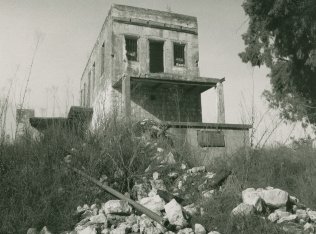| Year | Arab | Total |
|---|---|---|
| 1931 | 37 | |
| 1944/45 | 360 | 360 |
| Year | Arab | Jewish | Public | Total |
|---|---|---|---|---|
| 1944/45 | 2795 | 376 | 171 | 3342 |
| Use | Arab | Jewish | Public | Total | ||||||||||||||||
|---|---|---|---|---|---|---|---|---|---|---|---|---|---|---|---|---|---|---|---|---|
|
23 | 171 | 194 (6%) | |||||||||||||||||
|
2772 | 376 | 3148 (94%) |
The village was situated on the central coastal plain, 1.5 km north of the al-'Awja River. It was about 1 km east of a highway leading to Tel Aviv, Jaffa, and neighboring villages. The village was founded by nomads who traced their ancestry to the 'Arab al-Malaha Bedouin; they settled in the area, initially building their houses around a spring, and later along the road to Ra's al-'Ayn (a nearby village that was deserted at the beginning of this century). The village houses were laid out in no particular pattern. The population was predominantly Muslim. During the Mandate, large landowners built villas amidst the outlying citrus and banana groves. In 1944/45 a total of 949 dunums was devoted to citrus and bananas and 1,796 dunums were allocated to cereals; 27 dunums were irrigated or used for orchards. Wells on its east side provided irrigation water.
It is difficult to determine when the villagers were displaced, but the village was probably occupied relatively early, in the first weeks of 1948. Located in an area of heavy Zionist settlement northeast of Tel Aviv, the village would have been within easy reach of a Haganah or Irgun strike. In the period between late December 1947 and late March 1948, a significant number of villages in this area were emptied, generally as a result of direct attacks.
The settlement of Newe Yaraq (143171) was established in 1951, partly on village lands and partly on the lands of Jaljulya (a Palestinian village that still exists).
The site is very difficult to identify. Some of the villas still stand, deserted, amidst wild vegetation. One of them belonged to Hashim al-Jayyusi, who later became a Jordanian cabinet minister. It is a two-storey, concrete structure with rectangular doors and windows and a stairway in front that leads to the second storey. The other villas have been reduced to rubble. The land in the area is cultivated.

